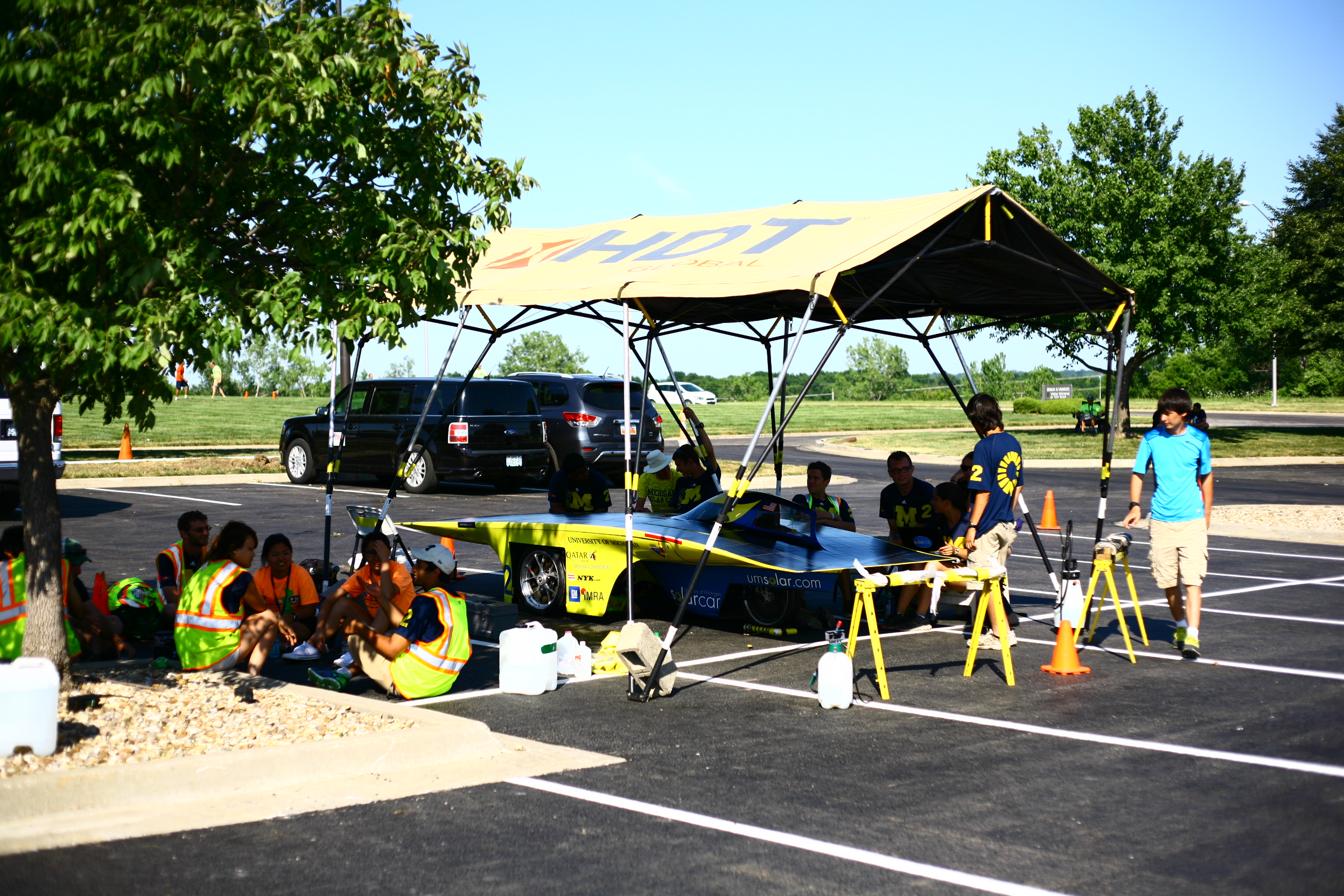Overland Park, Kansas (ASC 2014 Day 4)
After four uneventful hours of driving we arrived without problems in Overland Park, Kansas. We finished the stage in second place, coming in about an hour and a half behind the University of Michigan. Iowa State University rolled in about an hour after us. The sky was much clearer than expected with no clouds in sight for end of day charging, so we ended the day with a lot of power.
Today we passed through a large portion of Kansas which consisted of gently rolling hills, cows and hay bales. We passed through our observer’s hometown, so we learned a lot about the area and the hay bales. We also learned about the beginning of the American Solar Challenge, which started with the GM Sunrayce in 1990. For the first rayce, all of the observers were GM employees who were paid their full salaries during the rayce. In 1993 the organizers created a course on photovoltaic cells in which the students were given the option to be observers on the race and receive one credit hour. This is how our observer became involved in solar racing. In the first few rayces, there were over 30 teams competing and stage stops every night. The observers and teams would stay together in gymnasiums each night, sometimes sleeping on wrestling mats. One time our observer slept on the pole vaulting pits at an indoor track. Many of the observers return year after year, so it is very interesting to speak to them and learn about their backgrounds. Some are as young as members of our team, so it is nice to see that solar racing will stand the test of time.
After arriving at the stage stop, our team enjoyed grilled corn and fresh fruit provided by our scouting vehicle and enjoyed the nice weather on the Black and Veatch campus. There also was a pick-up game of soccer with members of most teams playing as well as some officials. We are now half way done with the race, wish us luck as we embark on the second half of our journey!
Today we would like to thank Delta for the generous use of their composites workspace. For each solar car, our team has milled molds and then laid-up carbon fiber or fiberglass parts in two molds, for the top and bottom of the shell. The parts are then glued together and cut apart at a new seam line. Each shell takes a minimum of four layups to complete, and each layup takes about 24 hours to fully cure. Delta has an autoclave which is large enough to hold our car molds. Using an autoclave, which is essentially a large oven for composite parts, ensured that our parts cured completely and in a timely manner. In addition to the use of their workspace, Delta has also donated lay-up supplies when our team ran out and has helped us to load our molds into their autoclave. Thank you Delta!
Team Highlights:
Arlo is proud that the electrical system is withstanding the vibrations, heat, and bumps that the solar car is experiencing.
Mason enjoyed driving the solar car, though there was a fly caught in the canopy.
Nick Bower enjoyed driving the scout vehicle 160 miles with a spare tire on it.
Nick Sloan enjoyed the location.
Luci and many other team members enjoyed going out to eat after packing up for the night. The root beer floats were especially tasty.


